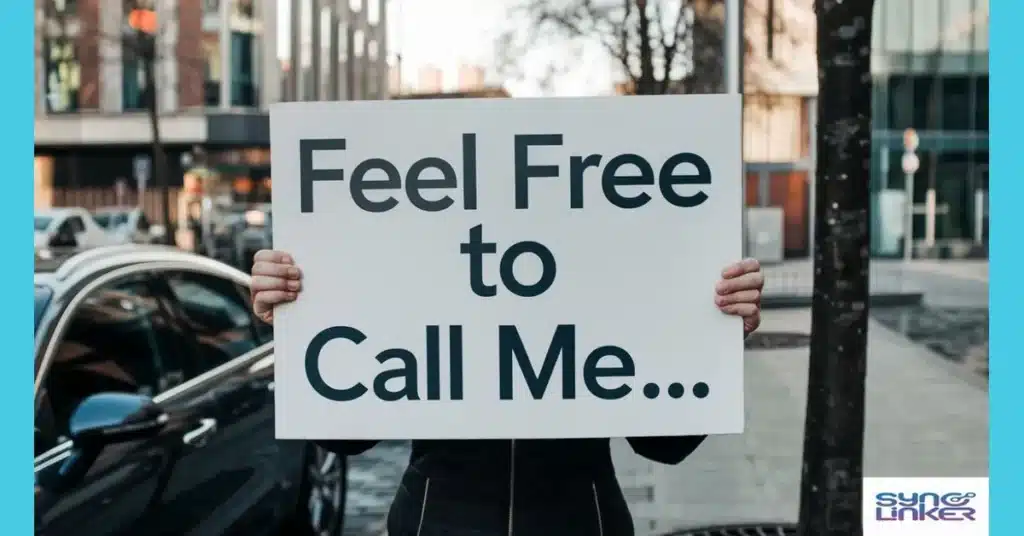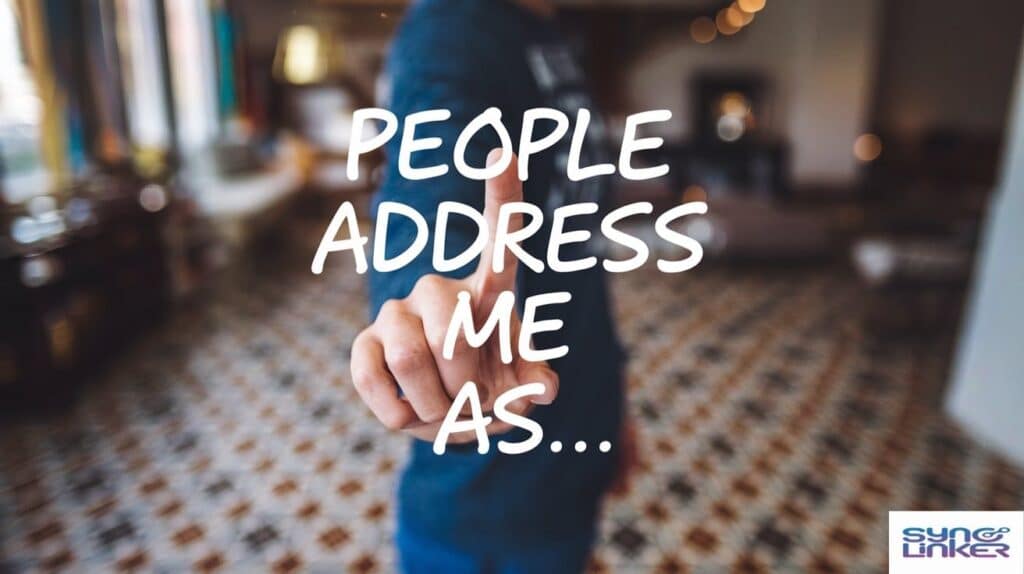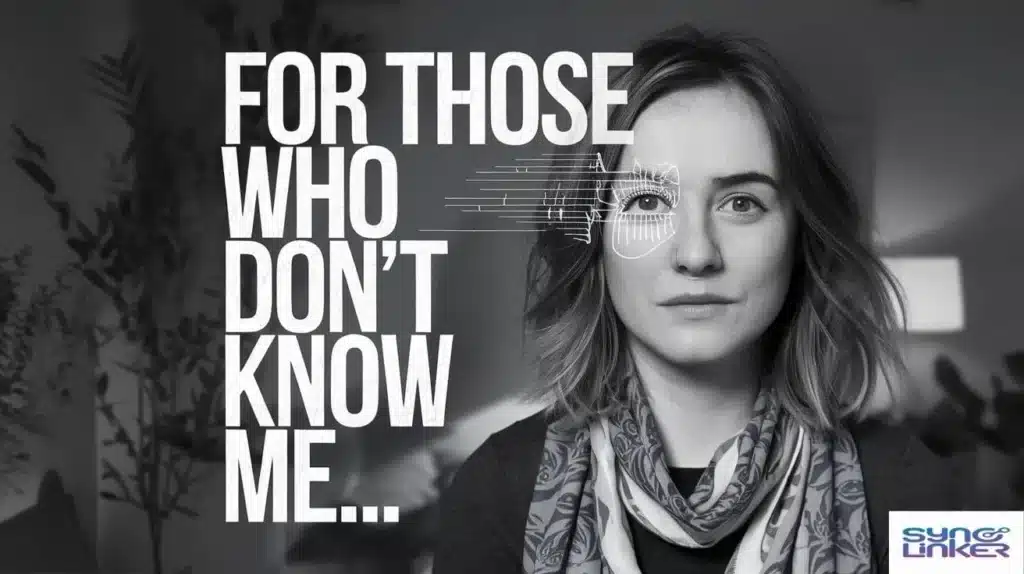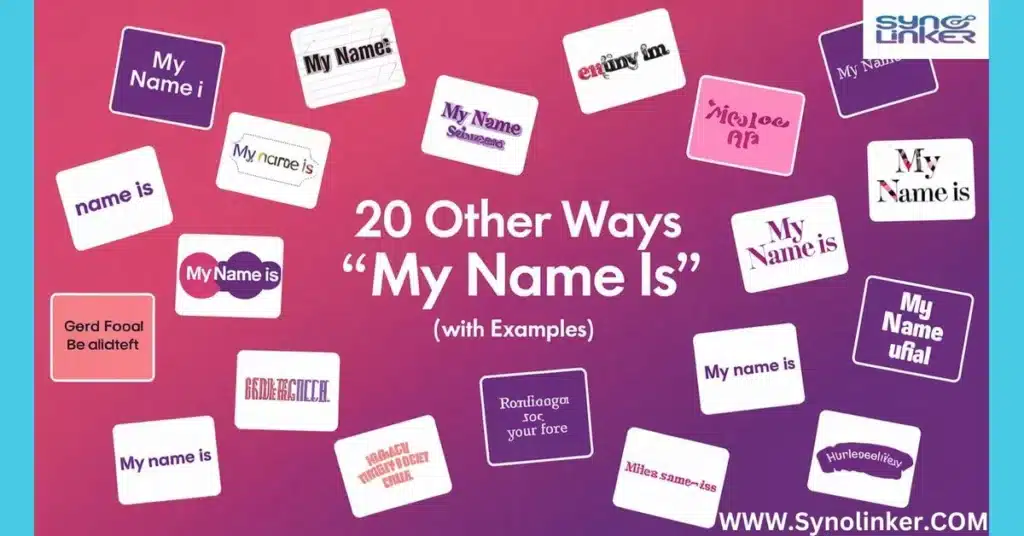Have you ever felt that saying “My name is” sounds a bit too basic? Let’s explore some fresh ideas and creative ways to introduce myself in various situations, from casual meetups to professional settings. After all, how you present yourself can make a lasting good first impression.
Is It Professional to Say “My Name Is”?
In today’s professional setting, saying “My name is” remains perfectly acceptable and widely used. While there are many alternative phrases for introducing yourself, this classic approach conveys clarity and confidence without unnecessary complexity. However, your choice of introduction should match the context – whether you’re in formal context or casual settings. The key isn’t necessarily avoiding “My name is,” but rather ensuring your entire self-presentation fits the situation appropriately.
Why Consider Alternative Ways to Introduce Yourself?
In today’s dynamic world, your command of language can set you apart. When introducing ourselves, we often default to the simple “My name is,” but there are many more engaging ways to share your identity. These alternatives can add a personal touch and show your personality right from the start.
What To Say Instead of “My Name Is”
- “I Go By…”
- “Allow Me to Introduce Myself…”
- “You Can Call Me…”
- “I’m Known As…”
- “Please Call Me…”
- “I Prefer to Be Called…”
- “Feel Free to Call Me…”
- “I Answer To…”
- “Let Me Introduce Myself…”
- “I’d Like to Be Called…”
- “People Address Me As…”
- “I’m Commonly Known As…”
- “I’ll Be Your…”
- “For Those Who Don’t Know Me…”
- “They Call Me…”
- “I’m Pleased to Be Known As…”
- “You’ll Know Me As…”
- “In This Context, I’m…”
- “I Present Myself As…”
- “I’m Recognized As…”
1. “I Go By…”

This flexible expression works perfectly in both casual settings and professional settings. “This is particularly helpful when the name you go by is different from your legal name.”
Example Scenarios:
- In an email:
“Hi team, I go by Alex, and I’ll be joining the marketing department next week.”- At a conference:
“Hey there! I go by Sam, and I’m here representing TechCorp.”
Read more about 20 Other Ways to Say “Happy Valentine’s Day”
2. “Allow Me to Introduce Myself…”
This phrase adds a touch of sophistication to your introduction, perfect for formal situations where you want to demonstrate your command of language.
Example Scenarios:
- Business presentation:
“Allow me to introduce myself – I’m Jennifer Chen, your new project coordinator.”- Formal email:
“Dear Mr. Thompson,
Allow me to introduce myself. I’m Marcus Wright, the senior analyst at DataTech Solutions.”
3. “You Can Call Me…”
This casual yet friendly approach works well in relaxed introductions and creates an instant connection.
Example Scenarios:
- Social media bio:
“You can call me DJ – your go-to social media strategist!”- Networking event:
“Hi everyone! You can call me Raj. I’m the new UX designer.”
4. “I’m Known As…”

Perfect for situations where you have a widely used name or nickname that differs from your formal name.
Example Scenarios:
- Professional blog:
“I’m known as ‘The Tech Whisperer’ in the industry, but my friends call me Patricia.”- Workshop introduction:
“In the design community, I’m known as ‘Creative Kate’, and I’ll be your instructor today.”
5. “Please Call Me…”
This polite form works well in both casual settings and professional settings, offering a perfect balance of warmth and respect.
Example Scenarios:
- Team email:
“Hello everyone,
Please call me Beth. I’m excited to join the research team.”- Client meeting:
“Good morning! Please call me Mike – I’ll be your financial advisor.”
6. “I Prefer to Be Called…”
“When you want to establish your chosen name clearly, this phrase works perfectly.”
Example Scenarios:
- HR form:
“Legal name: Elizabeth Johnson
I prefer to be called: Liz”- Introduction email:
“While my full name is Christopher, I prefer to be called Chris in the workplace.”
7. “Feel Free to Call Me…”

This welcoming phrase creates an instant casual connection and works well in friendly settings.
Example Scenarios:
- Online community:
“Feel free to call me Luna – I’m your new community moderator!”- Volunteer group:
“Feel free to call me Coach T – I’ll be leading the youth basketball program.”
8. “I Answer To…”
This casual and friendly way to share your name adds a bit of personality to your introduction.
Example Scenarios:
- Creative agency meeting:
“I answer to Max, and I’ll be handling your graphic design needs.”- Social group:
“I answer to pretty much anything, but Bella works best!”
Read more grammar lessons on Synolinker
9. “Let Me Introduce Myself…”
Perfect for formal workplace introductions where you want to maintain professionalism while being approachable.
Example Scenarios:
- Business proposal:
“Let me introduce myself – I’m Sarah Jones, founder of Innovation Labs.”- Conference presentation:
“Let me introduce myself – I’m Dr. James Wilson, and I’ll be speaking about renewable energy.”
10. “I’d Like to Be Called…”
This assertive yet polite phrase helps establish your name preference clearly.
Example Scenarios:
- New job orientation:
“While my legal name is Margaret, I’d like to be called Maggie.”- Academic setting:
“I’d like to be called Professor Zhang in class settings.”
11. “People Address Me As…”

This flexible expression works well in both casual settings and semi-formal situations, adding a touch of sophistication to your self-introduction.
Example Scenarios:
- Professional webinar:
“People address me as Dr. Martinez, but Jamie is fine in informal settings.”- Online forum introduction:
“People address me as TechGuru online, though my actual name is Thomas Chen.”
12. “I’m Commonly Known As…”
Perfect for sharing your widely used name or professional title, especially in situations where you have multiple roles.
Example Scenarios:
- Industry conference:
“I’m commonly known as The Marketing Maverick, though officially I’m Rebecca Stone.”- Social media bio:
“I’m commonly known as Chef Ray in the culinary world. Welcome to my cooking channel!”
13. “I’ll Be Your…”
This approach combines your name with your role, making it perfect for service-oriented professional settings where you want to establish both identity and purpose.
Example Scenarios:
- Customer service:
“I’ll be your account manager today, Emma Thompson.”- Educational setting:
“I’ll be your guide through this workshop – Jordan Parker at your service.”
14. “For Those Who Don’t Know Me…”

This personal touch works wonderfully in situations where you might be known to some but not all participants, showing good awareness of social dynamics.
Example Scenarios:
- Team merger email:
“For those who don’t know me, I’m Aisha Patel, heading the innovation team.”- Community event:
“For those who don’t know me, I’m Marcus, the neighborhood watch coordinator.”
You might be interested 20 Other Ways to Say “Firstly, Secondly, Thirdly”
15. “They Call Me…”
“This casual yet intriguing way to share your name can work well in informal and creative settings.”
Example Scenarios:
- Creative workshop:
“They call me The Word Wizard, but my birth certificate says William Blake.”- Networking mixer:
“They call me Sunny – it stuck after years of bringing positivity to projects!”
16. “I’m Pleased to Be Known As…”
This formal yet warm approach helps create a good first impression in professional contexts while maintaining approachability.
Example Scenarios:
- Business partnership email:
“I’m pleased to be known as your new strategic advisor, Alexandra Kim.”- Academic introduction:
“I’m pleased to be known as Professor Walker, your guide through Advanced Economics.”
17. “You’ll Know Me As…”

This forward-looking phrase works well in situations where you’ll have ongoing interactions, establishing your command of language and presence.
Example Scenarios:
- Project kickoff:
“You’ll know me as the Project Phoenix lead, Diana Foster.”- Course introduction:
“You’ll know me as Mr. Rodriguez, your Spanish language instructor.”
18. “In This Context, I’m…”
This sophisticated way of introducing ourselves acknowledges that we might have different roles in different situations.
Example Scenarios:
- Multi-role professional:
“In this context, I’m your financial consultant, James Wilson.”- Cross-departmental meeting:
“In this context, I’m the UX team representative, Sophie Chen.”
19. “I Present Myself As…”
A slightly formal but engaging way to share your identity, perfect for professional settings where you want to make a strong impression.
Example Scenarios:
- Business proposal:
“I present myself as the lead architect for this project, Nathan Brooks.”- Formal introduction letter:
“I present myself as your new regional director, Maria Gonzalez.”
20. “I’m Recognized As…”

This phrase works well when you have established credentials or reputation, helping to establish authority while maintaining approachability.
Example Scenarios:
- Industry presentation:
“I’m recognized as an authority in sustainable architecture, Dr. Sarah Hammond.”- Professional bio:
“I’m recognized as The Data Detective in cybersecurity circles – formally, I’m Adrian Park.”
Making Your Introduction Memorable
Remember, the way you introduce yourself can significantly impact your good first impression. Here are some tips to make your introduction more effective:
Consider Your Audience
- In a professional setting, use more formal variations
- For casual settings, opt for relaxed, friendly approaches
- In social situations, feel free to add some personality
Context Matters
Different situations call for different introduction variations. Your self-presentation should match the environment:
- Business meetings: More formal approaches
- Social gatherings: Casual, friendly introductions
- Online platforms: Creative and engaging introductions
Cultural Considerations
When meeting new people from different cultural backgrounds, consider:
- Appropriate level of formality
- Cultural naming conventions
- Local customs for introductions
Tips for Effective Name Introductions
- Be clear and confident
- Match your tone to the situation
- Consider adding a brief personal detail
- Use appropriate body language
- Remember to smile!
Common Mistakes to Avoid
- Being too casual in formal settings
- Using complicated or hard-to-pronounce nicknames
- Forgetting to explain name pronunciation if needed
- Being too formal in casual situations
Making Your Introduction Work for You
Your name introduction is often your first chance to show your personal touch and make a connection. Whether you’re in a business environment or informal environments, choosing the right introduction can help you:
- Build instant rapport
- Show cultural awareness
- Demonstrate social grace
- Express your personality appropriately
Conclusion
Having multiple ways to introduce yourself adds versatility to your social greeting skills. These alternative phrases give you options for any situation, helping you make meaningful connections while showing your command of language.
Remember, the best introduction is one that feels natural to you while being appropriate for the situation. Whether you’re in formal context or laid-back context, choosing the right way to share your name can help create those important first impressions that lead to lasting connections.
Practice these variations and find what works best for you in different situations. After all, your name is an essential part of your identity, and how you share it can make a significant difference in both personal and professional relationships.

Emily Hanis is an experienced writer with a passion for all things grammar. With years of expertise in the field, she brings clarity and creativity to her content, making complex language rules easy to understand. On her blog, Emily shares practical tips, grammar insights, and a rich collection of synonyms to help readers enhance their writing skills. Her engaging style makes learning grammar both informative and fun.







